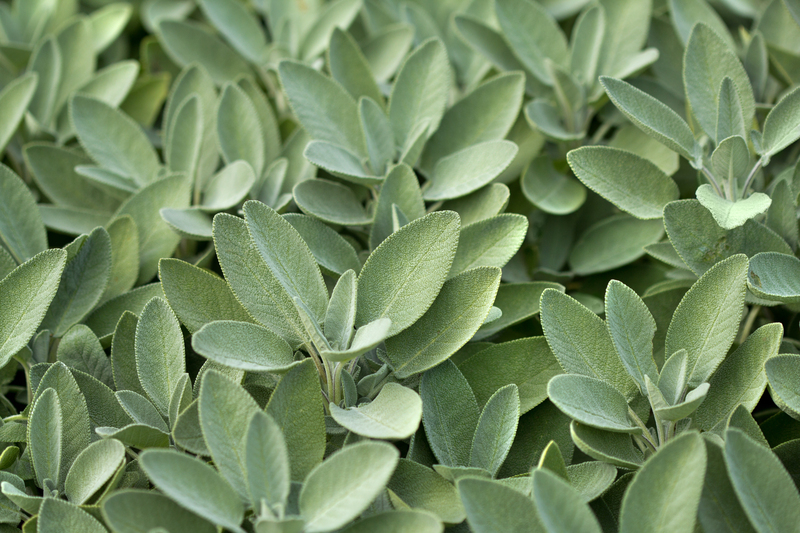Sustainable Gardening: Cultivating Hope Against Climate Change
Posted on 19/09/2025
Sustainable Gardening: Cultivating Hope Against Climate Change
In a world grappling with the ever-expanding threats of climate change, sustainable gardening has emerged as both a profound act of environmental stewardship and a means of reclaiming hope. Embracing nature with mindful practices can transform our backyards into sanctuaries for biodiversity, resilience, and climate action. This comprehensive guide delves into the myriad benefits, strategies, and joys of cultivating a sustainable garden that nurtures both the earth and the soul.
Understanding Sustainable Gardening
Sustainable gardening is far more than just growing plants--it's a commitment to using resources wisely, fostering biodiversity, and reducing our ecological footprint. This method aims to work with nature rather than against it. By using organic practices, native plants, and water conservation techniques, sustainable gardening ensures our green spaces are productive, environmentally resilient, and regenerative.
Why Does Sustainable Gardening Matter?
- Reduces carbon footprint: Plants sequester carbon and sustainable techniques minimize fossil fuel and chemical use.
- Conserves water: Through drought-tolerant gardens, rainwater harvesting, and mulch.
- Promotes biodiversity: Native species and pollinator-friendly plants support wildlife.
- Improves soil health: Composting and rotation build rich, living soil.
- Fosters community and resilience: Gardens connect people to nature and to each other.
A home garden may seem small, but multiplied across communities, it becomes a critical tool in our climate change toolkit.

Core Principles of Climate-Conscious Gardening
Cultivating a climate-resilient garden starts with knowledge and intentional choices. Consider these foundational pillars to make your gardening efforts more sustainable:
1. Grow Native and Adapted Plants
- Natives are adapted to local climate and soil, requiring less water and care.
- Choose varieties proven to thrive with minimal chemical intervention.
- Support local pollinators, birds, and beneficial insects.
2. Enrich Your Soil Naturally
- Practice composting to recycle food and garden waste into nutrient-rich humus.
- Rotate crops and plant cover crops (like clover or vetch) to prevent depletion.
- Avoid synthetic fertilizers that contribute to greenhouse gases and water pollution.
3. Prioritize Water Wisdom
- Install rain barrels and swales to capture rainfall.
- Mulch garden beds to limit evaporation and cool soil.
- Utilize drip irrigation for water efficiency.
- Plant in fall or early spring to leverage seasonal rains.
4. Reduce, Reuse, Recycle
- Repurpose containers and materials: old buckets, crates, and broken pots can all find new gardening life.
- Purchase from local nurseries to reduce transportation emissions.
- Recycle plant pots and garden tools instead of sending them to landfill.
5. Foster Biodiversity and Create Habitat
- Interplant veggies, flowers, and herbs for natural pest control and pollinator support.
- Leave some leaf litter and dead wood--microhabitats for insects and birds.
- Create a pond or birdbath for wildlife water.
Sustainable Garden Design for Climate Adaptation
Designing your garden to be resilient to climate change involves considering local conditions and future climate trends. Here's how to set up your outdoor space for both beauty and function:
Site Assessment and Planning
- Observe sun, shade, wind, and water flow on your property year-round.
- Group plants with similar water and light needs together for efficiency.
- Use contouring and berms to slow and absorb rainwater, preventing erosion.
Incorporating Perennials and Edible Landscaping
- Perennial vegetables (like asparagus and rhubarb) require less tilling and fertilizer.
- Fruit and nut trees provide shade, food, and carbon storage for decades.
- Edible ground covers (strawberries, thyme) reduce weeds and conserve moisture.
Composting and Organic Matter Management
- Set up a bin or pile for kitchen scraps and yard waste--compost reduces landfill methane and nourishes your garden.
- Use leaf mold, grass clippings, and wood chips as mulches.
- Vermicomposting (using worms) is a great way to process food scraps in small spaces.
Climate-Resilient Gardening Practices
With more extreme heat, drought, and sudden storms, traditional gardening practices may no longer suffice. Building resilience into your garden can help ensure its success, even as climate patterns shift.
Choose Heat- and Drought-Tolerant Varieties
- Look for vegetable cultivars bred for performance in dry or hot conditions.
- Consider Mediterranean herbs (lavender, rosemary, sage) or succulents for xeriscape sections.
- Mulch deeply, and space plants for optimal airflow and reduced competition for water.
Protect Against Pests and Extreme Weather
- Use row covers to shield delicate seedlings from intense sun, hail, or insect pests.
- Build windbreaks (using hedges or trellises) to reduce desiccation and wind damage.
- Practice integrated pest management (IPM) to minimize chemical use while controlling outbreaks.
Encourage Carbon Sequestration
- Plant deep-rooted grasses and perennials that store carbon in the soil.
- Try "no-dig" gardening to preserve soil structure and microbial life.
- Grow cover crops in fallow beds and chop-and-drop them to feed the soil.
Embracing the Benefits of Sustainable Gardening
The rewards of gardening sustainably extend well beyond climate change mitigation. These gardens provide:
- Food security: Homegrown produce reduces dependence on industrial agriculture and long-distance transport.
- Biodiversity: Native plants and flowers provide habitat and food for bees, butterflies, birds, and beneficial insects.
- Physical and mental health: Gardening is proven to reduce stress, promote physical activity, and boost well-being.
- Community connection: Gardens can become spaces for neighbors to share knowledge, seeds, and harvests.
- Education: Children and adults alike can learn about nature, ecology, and the impacts of climate change firsthand.
Tools and Techniques for Sustainable Gardening
Water Harvesting and Irrigation
- Rain Barrels: Collect roof runoff for garden use during dry periods.
- Drip Irrigation: Delivers water directly to plant roots, minimizing evaporation.
- Mulching: Use organic materials like straw, wood chips, or compost for moisture retention.
- SwaIes: Contour your landscape to direct and absorb rainfall.
Pest and Weed Control the Sustainable Way
- Encourage beneficial insects like ladybugs and lacewings to control aphids and pest outbreaks naturally.
- Install birdhouses and bat boxes for feathered and furry pest patrol.
- Use mechanical hand-weeding and mulching to control weeds without chemicals.
- Rotate crops and interplant species to outsmart pests and diseases.
Compost and Soil Building Practices
- Compost kitchen scraps, yard waste, and even shredded newspaper.
- Apply finished compost to boost soil microbes and structure.
- Add biochar to sequester carbon and increase nutrient retention.
Integrating Sustainable Gardening Practices at Home
Getting started with a sustainable garden doesn't require a total overhaul of your space. Small changes can make a significant difference. Here are actionable sustainable gardening tips for beginners and seasoned gardeners alike:
- Start small: Convert a single bed, planter box, or patio container to sustainable methods before expanding.
- Choose organic seeds and plants: Avoid varieties treated with neonicotinoids or other harmful chemicals.
- Plant a pollinator patch: Dedicate part of your garden to wildflowers and nectar-rich plants for bees and butterflies.
- Compost everything you can: Fruit peels, coffee grounds, and even compostable kitchen paper can enrich your soil.
- Reduce lawn area: Replace parts of your grass lawn with drought-tolerant beds or edible landscaping.
- Engage with your community: Share seeds, harvests, and ideas; join local gardening or sustainability groups for support and inspiration.
Case Studies: Success Stories in Eco-Friendly Gardening
1. Urban Food Gardens in Drought-Prone Cities
Cities like Los Angeles and Melbourne are seeing a surge in water-wise community gardens that use California natives and Mediterranean herbs, drastically reducing water use and providing fresh food in urban "food deserts."
2. Suburban Pollinator Corridors
In the UK, homeowners have worked together to transform lawn spaces into bee-friendly wildflower corridors, helping reverse pollinator declines and supporting local agriculture.
3. School Gardens for Climate Literacy
Across North America and Europe, schools are integrating edible gardens and composting into their curriculum, teaching the next generation how food systems and climate are interconnected.
Overcoming Challenges and Common Myths
Despite its benefits, there are misconceptions that sustainable gardening is too costly, time-consuming, or only suited for rural areas. Here's the truth:
- Cost: Many sustainable practices, like composting and mulching, actually save money over time.
- Time: Once established, climate-resilient gardens require less watering, fewer chemical inputs, and lower maintenance.
- Space: Sustainable gardening works for balconies, windowsills, and patios--not just backyards.

Sustainable Gardening: Cultivating a Hopeful Future
In facing the daunting realities of climate change, every effort matters--and sustainable gardening puts the power for change right in our hands. By nurturing our soils, supporting wildlife, conserving water, and choosing climate-resilient plants, we become both gardeners of the earth and stewards of hope.
Take the first step today: Whether you plant a single pollinator flower, start a compost pile, or convert your lawn into a native oasis, remember that every act of sustainable gardening helps to cool the planet, sequester carbon, and build a more resilient tomorrow.
Conclusion: The Path Forward in Sustainable Gardening
As the climate crisis advances, sustainable gardening offers more than just beautiful blooms or homegrown vegetables. It is a tangible, hopeful response to an immense challenge. By adopting resource-wise techniques, creating habitat, and sharing our knowledge, we ensure that our gardens not only survive but thrive--and that we play our part in cultivating a healthier, greener planet for generations.
Are you ready to transform your garden into a beacon of hope against climate change? Start today and join the global movement of climate-smart gardeners changing the world one plant at a time.

